This week will be my 17th (and last) attendance at the Cannes Lions Festival of Creativity as I say good-bye (sniff, sniff) to the conference/trade show circuit. Cannes Lions has always been my favorite event, even over the Mobile World Congress, and I wanted to end my circuit here.
In this (somewhat long) piece I’ll write about the value of this festival to the industries and ecosystems in which I have both worked and followed: advertising, digital technology, legal technology, media, mobile technology and software development.
Later in the week I plan to write two or three more posts while I am here: one on the story about how many advertisers are being urged to disclose their use of generative AI in social media campaigns, and perhaps one or two on the generativeAI that affects many of the industries I write about, beyond just advertising/marketing.
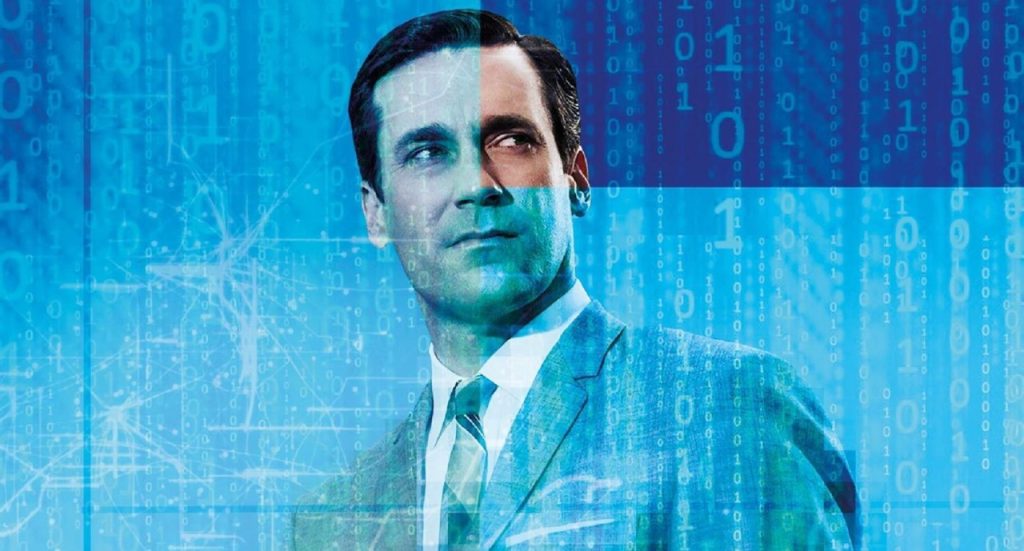
ABOVE: my “Don Draper and data” meme, which I first used in 2016, created by ClicData – the marvellous marketing/data analystics company that builds platforms to retrieve data in whatever form, from 100s of different sources, and transform it, analyze it, share it in raw form or via structured dashboards and reports
18 June 2023 – Almost every June my team and I made the pilgrimage to the annual Cannes advertising conference, although the first few times I attended it was as an employee of Ogilvy. This year I am flying solo with no crew or camera, not so much to cover the event as a reporter but to be just an attendee, to soak up some info, and network with old friends.
NOTE TO MY READERS: Ogilvy is the New York City-based advertising, marketing, and public relations agency (which is now part of the WPP Group, one of the largest advertising and public relations companies in the world). They were a client of the Wall Street law firm where I worked and I was able to segue to a position there. It enabled me to learn the advertising and marketing business, and allowed me to see the very beginnings of e-commerce and the technology behind consumer data analysis which has informed so much of what I write about.
And to give it its full honorific, it’s the Cannes Lions International Festival of Creativity 2023 which I began to call “The Conference of the World’s Attention Merchants”. Because over the past 12+ years the festival has evolved to include not only more brand clients but also, due to media fragmentation which has led to the change of some and the birth of others, an expansion into tech companies, social media platforms, consultancies, entertainment and media companies — essentially the entire attention ecosystem, fueled by data. Alas, Don Draper is (almost) dead. I say “almost” because some real human ingenuity and creativity is still at work.
And, yes, the conference has become as famous for its rosé-soaked yacht parties as it is for the agenda-setting discussions and deals. But even pre-COVID the event was becoming significantly subdued … slimmer, a bit more caffeinated. And more so after COVID as the industry was still recovering from a turbulent global economy, plus dealing with the advances of social media platforms and digital disruption in areas normally reserved for the mainstream advertising players. Those social media platforms and that digital disruption I’ll cover below. But first, some basics:
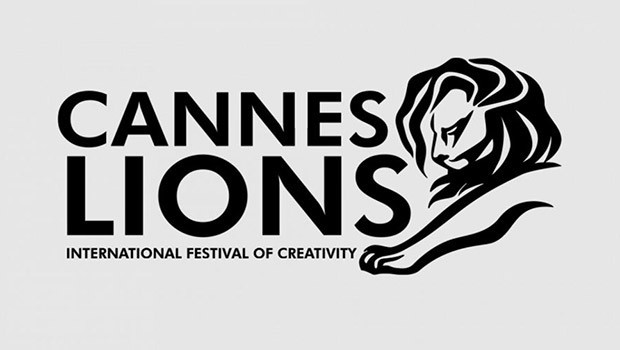
The event was actually inspired by the Cannes Film Festival, when a group of cinema screen advertising contractors belonging to the Screen Advertising World Association felt the makers of advertising films should be similarly recognized. It launched in Venice, Italy, in September 1954, with 187 advertising film entries from 14 countries. The lion of the Piazza San Marco in Venice was the inspiration for the Lion trophy. The event then alternated between Venice and Cannes before settling in the latter in 1984. New categories have been created for awards in recent years to reflect creative effectiveness, and the educational sessions and vendor presentations exploded exponentially. This year there is a gaming advertising award, and a special gaming industry track.
But over the past 70 years the goal has been to bring together at one annual, global event members from every group in the creative communications industries in whatever capacity they serve. And it has worked: attendees from every sector of the advertising, communications, entertainment, and media industries (and, yes, they overlap) have driven some amazing talks, debates, live panels and tutorials with world-class advertisers, athletes, directors, entertainers, film and TV stars, writers, and other speakers. In addition to the conference panels, Cannes Lions is also a series of award ceremonies honoring key industry players for their creative work each year.
In 2018, Cannes Lions launched 9 core tracks:
•Reach
•Communication
•Craft
•Experience
•Innovation
•Impact
•Good
•Health
•Entertainment
They are a little tough to explain without examples and context but the tracks provide a structure to the festival and make it easier for delegates to find inspiring content and best navigate the Awards, panels and discussions during the five-day event. Plus there is the best mobile app at any conference I attend: the Cannes Lions “Networking App” which uses a funky artificial intelligence to help you meet the right people efficiently and easily.
Plus the “connect band” introduced 6 years ago. It is similar to the band I use at the Mobile World Congress and the Consumer Electronics Show. I can create a read-out on my phone or laptop (even a print-out) of everybody I met at the event:
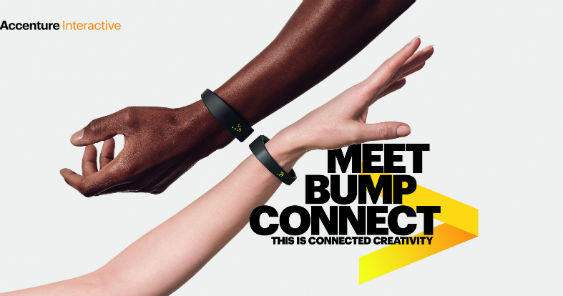
And Cannes Lions also includes an interactive digital platform allowing attendees to access the festival’s impressive archive of talks and campaigns throughout the year.
Who attends Cannes Lions?
From start-ups to established creative agencies, Cannes Lions brings together each June about 20,000 industry attendees from over 150 countries worldwide for 5 (very sunny days) in the South of France, plus about 5,000 event/vendor staff. For comparison purposes, the Mobile World Congress clocks in at about 188,000 attendees plus about 15,000 event/vendor staff.
And it is not a corporate conference; it’s a festival of creativity. So you are presenting to (or meeting with) some of the most highly-powered, smart and well-informed people on the planet – many casually dressed in shorts and sneakers.
Below is a partial list of the types of Cannes Lions attendees, taken from this year’s registration list. And just a short note: since I have usually attended as media I had access to one version of the attendee list but not the master attendee list because lots of people, from companies like Amazon and Apple, do not want it publicly know they are there:
•Advertising agencies
•Attorneys (from media companies and law firms)
•Communications companies
•Consultancies
•Creative marketing agencies
•Communications companies
•Digital media companies
•Distribution Companies
•Entertainment companies
•Film/TV stars
•Film/TV directors
•Music production companies
•Print Media
•Publicists
•Social media companies
•Social media influencers
•Tech companies (meaning a huge range of underlying infrastructure/information technology companies that includes eDiscovery companies)
•Television production companies
•Travel Companies
•Web Design Agencies
•Social media companies Influencers
The conference program
The conference program and venue list is huge but you can get a taste by clicking here. However, most vendors and companies have their own programs at their exhibit area or “cabana area” or “beach area” so it is only a partial list, really. So besides the formal adverting/creativity awards (of which there are about 30) you need to figure there are 100s of sessions to choose from over the 5 days. Yes. You really need a plan before you go. And it is why I needed a large team to cover it.
But the point is that this is a cross-discipline event, encompassing every aspect of the communications industry from print and publishing to entertainment to design and digital media. It is a jam-packed 5-day conference program which gives attendees a program of award presentations, panel discussions, workshops, networking events and training sessions.
And it is unparalleled networking opportunity for the communications industry, with a non-stop whirl of social events which take place away from the main stage. With everything from informal panel discussions in the beachfront cabanas along the Croisette to late-night drinks in the rooftop networking lounge at the Palais des Festivals, there’s always a reason to get together during Cannes Lions week.
A few points about that networking.
The networking
Cannes Lions is really about building relationships through networking, and what better way to network than over a drink or two or a fine meal. There are endless rounds of private parties and social events all over the city – with many delegates getting home as the sun comes up over the Mediterranean (been there, done that). To give you an idea, there are 40+ separate drinks/cocktail events Monday night, and 100+ Tuesday night. I have not checked the rest of the week.
And during the day food and drink are literally an arm’s length away. It is everywhere. Nobody wants you to leave the venues, especially after spending all that money to be here (more about cost in the next section). So you can start your day with breakfast at the Cannes Lions Beach club, or grab a quick coffee at Volupté on Rue Hoche, or scores of other places. Or head to the string of private beaches along the Croisette (that’s the promenade/boardwalk along the Cannes seafront) for one of a multitude of breakfast panel discussions. Plus all of the pop-up lounges and product launch venues in the city centre and in/around the event. Or (if you have the connection, “the juice”) network with “the Cannes Lions biggies” and other execs at one of the pool parties held in glamorous villas (there are about 25) set in the hills around Cannes.
As night falls, spend your downtime enjoying drinks on the Carlton terrace. Or maybe you have an invite for one of the superyacht parties (lesser in numbers these days) as you cruise around the Bay of Cannes. Or at one of the legendary late-night action bars (they open at 10pm).
What does it cost to attend Cannes Lions?
Ballpark figure? €€€€€€€€€€€€€€€€€€€€€€€€€€€€€€€€€€€€
A few years back I covered the cost of Cannes Lions in one of my event posts and most of my readers read the stats and were … 😵💫 . But remember: these are (mostly) huge companies with huge marketing budgets, and some pretty big deals will be signed at this event. And depending on where you are in the world, to come all the way to the south of France can be a big commitment. Just a few points:
•The Festival has tried to make it accessible to as many people as possible, even students. “Entire-event” passes begin at €6,495 ($7,100) and then go down to €1,000 ($1,100) – the variations based on what you’ll have access to. But you can get special 1-day or 2-day passes, “under 30 years of age” passes, special student passes, “lounge only” access passes, etc., etc.
•There is no cost to speak at the Festival, nor does Cannes Lions pay any speaker fees. This is quite unlike many other events I’ve attended. You make a pitch to the Cannes Lions event organizers and if your idea is successful, the cost to cover the logistics behind your idea (staff, travel, fees, accommodation) is all on you. As I have noted in my previous coverage of this event, the event organizers look for a single, clear message or idea. An inspirational piece or a big idea. A big announcement or game-changing development. A burning industry issue. A beautiful creative story. In-depth case study. Something that moves the audience emotionally. A story that explores current affairs or a “news event of the moment” and their impact on the future of the industry. There is actually a guide book which takes you through the entire process of “making a pitch”.
Then you/they determine what the size of the audience might be for such a session and determine the proper venue: one the large, main stages that can seat 3,000+ or the smaller forum rooms and workshop rooms which can accommodate 100 to 750.
•And not all hotels are expensive. In fact Airbnb seems to dominate the market. Over 7,000 of the company’s total 4 million+ world-wide listings are in Cannes. Many listings specifically market their proximity to the main venue, the Palais des Festivals, as a selling point. I would pre-pay for a 3-bedroom flat with a living room through Airbnb which was about 10 blocks from the Palais. And when I say “pre-pay” I mean I paid for 3 years in advance.
•WPP (the largest advertising, public relations, technology, and communications company out there) sends anywhere from 500 to 1,000 staffers. All the big players send enormous support staff to this event. Some spend close to €20 million (€22 million) for this event. Based on a canvass I did of a number of the agency event organisers, it can costs agencies roughly a minimum of $8,000 to $10,000 to send one person to Cannes, and obviously the price tag can grow way beyond that depending on food and entertainment spending. One major advertising agency told me that after they calculated how many people they needed over “X” number of shifts over the week, after they toted up the number of passes they needed, plus the prize categories they might go for (there are about 1,500 prize categories at about €500 per entry), they were at €750,000 before they had booked airfare or hotel.
•And once you’re at Cannes, things don’t get cheaper. The local hotels and restaurants know they have a captive audience. It costs €9 just to have a cup of tea inside the Hotel Barriere Majestic on the Croisette, one of the main hotels for the festival. At the Carlton down the street, it’s €32 for a chicken sandwich (I had one). It can be difficult to escape dinner from the cheaper nearby restaurants for less than €50 per head. Two years ago one of my staffers did some digging and had these other eye popping expenses:
– Accommodations: $26,786 for the seventh-floor penthouse at the Majestic per night
– Charters: $61,384, the starting weekly rental for the Quid Pro Quo yacht, which holds 10 guests in five cabins
– Cost of booking a private helicopter from Nice to Cannes via Heli Air Monaco: $558
– Booze: Veuve Clicquot Vintage Rose magnum $391 (InterContinental Carlton bar)
– Booze: $27 average price of a cocktail at the Carlton terrace
SIDE NOTE: a quick back-of-the-envelope calculation reveals the Festival earns $50 million+ just from the Lions prize category entry fees. The Festival brings in a total revenue of about $100 million.
Some think it might do well to move the Lions out of Cannes, to Amsterdam, Berlin, London, New York, etc. But that’s unlikely to happen. The Festival benefits enormously from their association with the Cannes Film Festival. Stars like Ian McKellen, Helen Mirren, Patrick Stewart, Ryan Reynolds, and Meryl Streep and many other movie stars and directors attend both, and that glamour rubs off on the Lions.
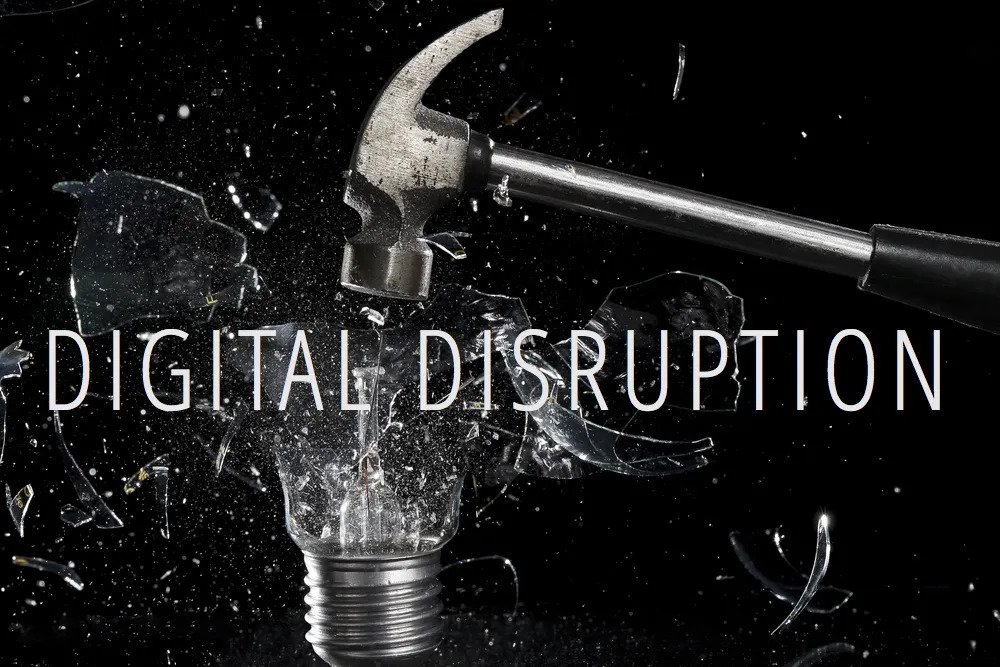
It was a mere 6-7 years ago that Facebook and Google were the toast of the town. Google has long used Cannes to butter up creatives (and media buyers and marketers), and Facebook has grown its presence alongside Google. And the industry said it benefited from this growth in online publicity. But then … dark clouds. Industry leaders starting expressing the opinion that “we are feeling a negative impact of disruption”.
Sound familiar? One leading light told me “even the children’s merry-go-round is feeling the competition from the leading tech companies”. What he meant was that the prize for the most audacious statement went to messaging platform Snapchat which had erected a giant yellow Ferris wheel next to the Palais des Festivals, offering holidaymakers and delegates a free ride. It simply dominates the event’s locale. Quoting Corrinne D’Harcour (who has been running Le Grand Carrousel de Cannes, the children’s attraction next door for the past 18 years) in the local Cannes press: “This has been a catastrophe. A regular tourism week in Cannes besides the Festival. Not only a free ride but they are handing out free lollipops to everybody with a Snapchat-branded logo. I cannot compete!!”
But that Snapchat-branded Ferris wheel … towering over the entrance of the nearby Palais, the main venue for the event … symbolized to many corporate marketers at Cannes the underlying issue: “do we need these media agencies like WPP and Publicis when we have the power of Facebook and Instagram (now with business accounts) and Youtube with a complete backend benefit of advanced analytics … and better results?”
Meanwhile over on the beach …
In days gone by, the waterfront along the Plage de la Croisette, the stretch of golden beach made famous by decades of cinematic glamour, used to be dominated by the once all-powerful media agencies, such as WPP and Publicis. Yet in a sign of the industry’s shifting sands, a host of Silicon Valley names rules the roost during the Cannes Lions festival. Facebook, Twitter, Spotify, YouTube, and others such as Pinterest set up hipster beach clubs where executives, journalists and marketers could talk business or just sip lattes while watching beach volleyball.
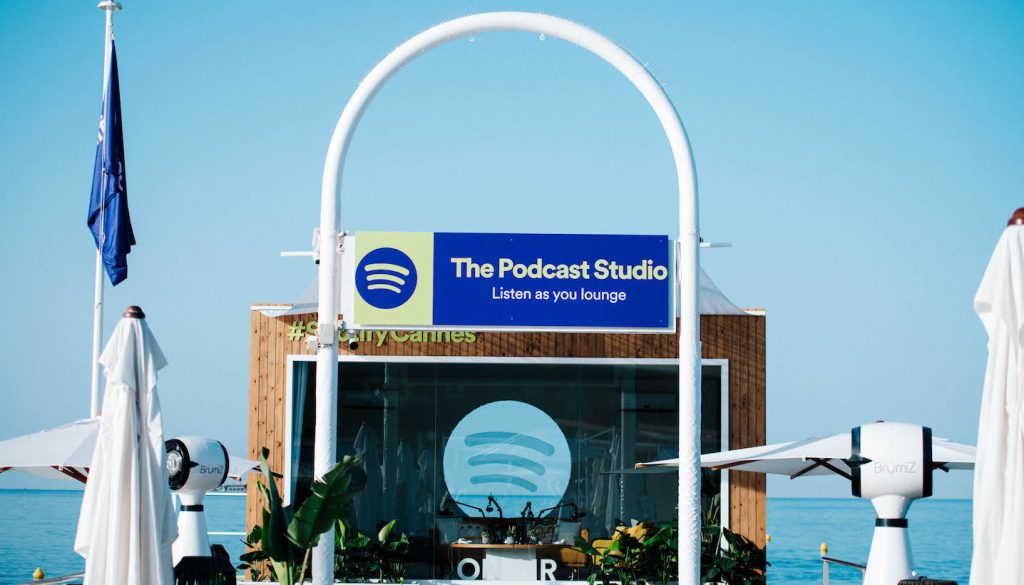
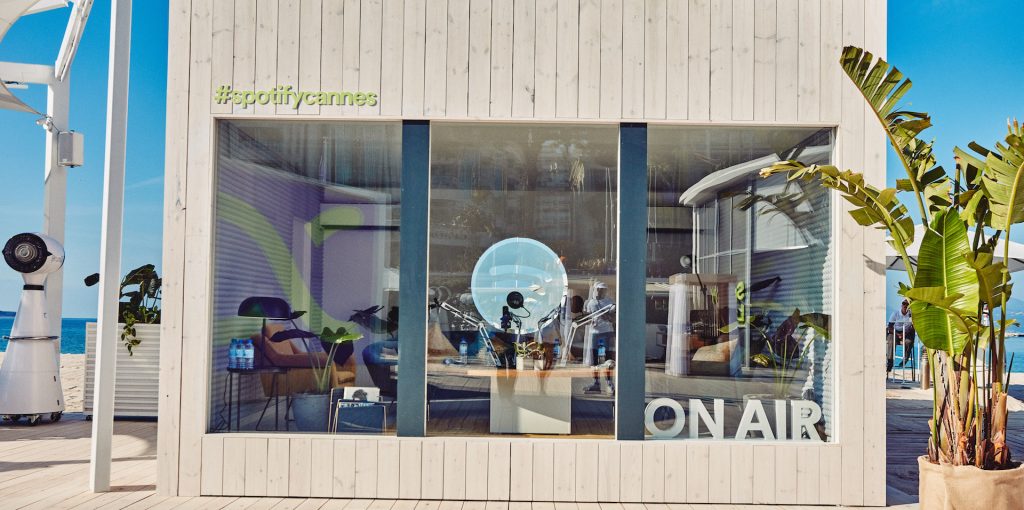
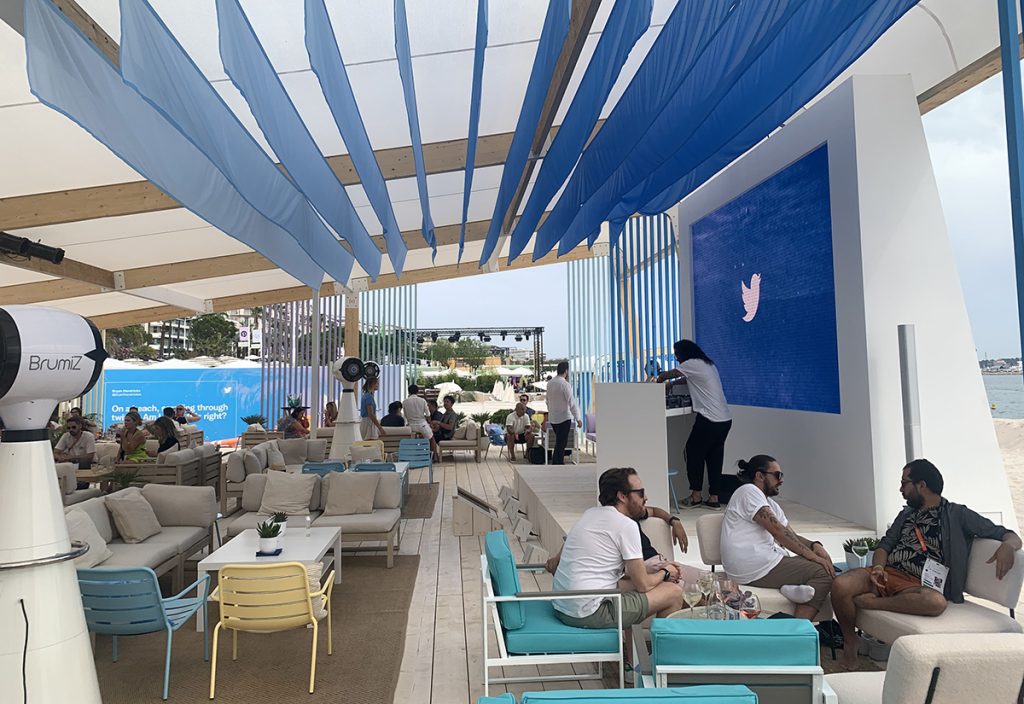
All of this “symbolism”, as it were, underlines an inexorable trend that is reshaping the advertising industry. Although the sector as a whole has benefited from growing digital ads, the media agencies are starting to feel the pinch as the leading technology companies become ever more powerful players in the industry. As an executive of one of the major UK TV networks said: “Cannes is now just a technology show. The vibe is now, ‘hey, come have a smoothie with us while we ruin your business’.”
And yet even if this feels like a shift in the industry’s balance of power, it is not all sweetness and cream for the techies. Because the tech companies also face threats to their own advertising models. Said a chap from Adweek magazine over breakfast this morning: “Hey, listen, big customers are finally seeing through some of the smoke and mirrors and have become openly critical of the way these techies calculate the effectiveness of advertising on their platforms. Worse, they have come under attack for the spread of fake news and hate speech. And that last point. Hoo boy, a bloody conundrum. The ad money that comes in … even if placed in or near fake news and hate speech … is tough to turn down. And this generative AI is going to play both ways”.
That digital impact … boy it hurts.
For the time being, though, it is the traditional media groups that are starting to feel the biggest impact from digital disruption. For the first time since the financial crash drove the advertising industry into recession in 2009, advertising’s big four — WPP, Publicis, Omnicom and Interpublic Group — are stalling. A reporter from the Financial Times with whom I had dinner last night noted that in addition to “all this technological disruption”, advertising firms are having to deal with (a) fierce cost-cutting by clients and (b) growing pressure from activist investors for short-term returns. It’s a perfect storm.
Added to that is an issue I cannot afford enough space to in this post: the lack of transparency around programmatic buying which so dominates this industry: the high-speed auctions for online ad slots. It has forced many companies to cut out the agencies completely and just deal directly with the tech platforms. The result has been a surge in advertising spending, with just two of those technology companies — Google and Facebook — already accounting for 1/5 of all global advertising spending.
Now, just a few personal, very selected bits – my major take-aways from 17 years of Cannes Lions:
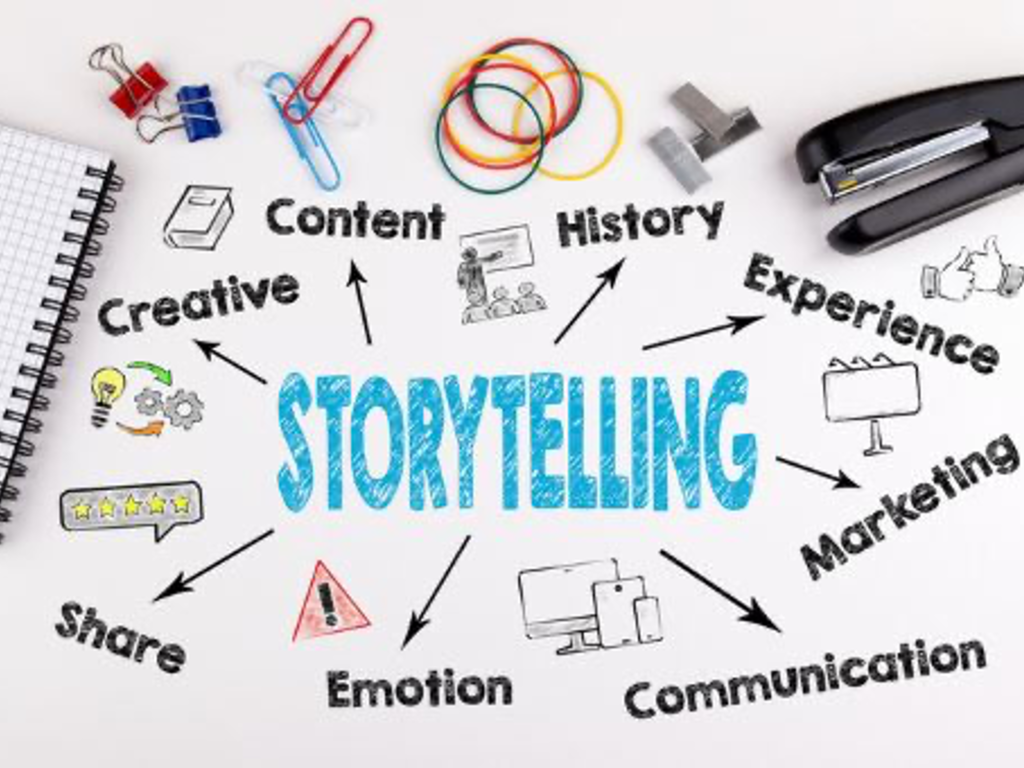
I first learned the art of storytelling in NYC, at film school. But it was not until I had attended a few sessions at the International Journalism Festival in Perugia, Italy that I learned technique – how different storytelling approaches can be applied to the same data.
But it was at Cannes Lions that it all came together, how practitioners (and audiences) define “multimedia storytelling” as the best approach to storytelling – a mix of text, graphics, photographs, videos, etc. And not limited to Web-based formats, but also including other platforms, such as print and broadcast. Newspapers and magazines have contained multiple story forms for decades in their packaging of text, photos, and information graphics. Television news has too, with video, audio, photos, and graphic animations. Additionally, most print and broadcast organizations also publish Web sites; and some are even publishing mobile media sites and tablet-based applications.
What I learned at Cannes Lions was that storytelling is an interactive form of art that involves words and actions to disclose the images and elements of a story while encouraging the audience’s imagination. It is an art form that holds a place in every society and culture. Why? Because the act of telling stories is a universal language that anyone, irrespective of their hometown, dialect, or origin, can understand. They stimulate the imaginations of the listener and create a sense of community.
Storytelling is a critical skill to have across every career path. In regards to public speaking, storytelling couldn’t be more important. It helps you draw your audience into your speech by establishing an emotional connection with them. Apart from the obvious benefit of engaging your audience, telling a story is far easier than memorising a script. Great storytellers can make even the most ordinary experiences captivating.
I certainly use all of these things in my public speaking, especially in my keynote speaker roles. The stories that each one of us has inside is the thing that makes us human. In reality, we are all storytellers, and with practice, we can improve the skill of storytelling. People tell stories to open up the world of possibilities with images and words. Stories allow us to connect with their journey and enhance our understanding of the world around us.
And take it all the way back. Storytelling is the earliest form of communication. Even before human beings could read and write, they relied on stories to share information with each other. Storytelling is a natural way to learn the basic pillars of any language, including grammar and vocabulary. Stories follow a logical flow that helps a person develop a habit of structured communication. The process of storytelling builds confidence in the speaker. When a person has confidence, they can better communicate with clarity.
What I learned at Cannes Lions was that all storytelling (and what is an ad, really?) has key elements like a character (person or object), a plot (or the story), and key expressions/words/graphics that engage the audience.
NOTE TO READERS: I have also been to a few sessions on “voice”, where you are instructed that a good verbal storyteller should vary her/his pace, pitch, and volume and use pauses to add a dramatic effect. Furthermore, you can use your facial expressions to match the story’s mood, appear comfortable and relaxed, and make eye contact to engage the audience.
And narrative structure – you best have a beginning, middle, and end. A successful story starts with an enticing incident, moves into action, builds a climax, and settles in a satisfying conclusion or resolution. Be it an ad, a story, a film.
When all this stuff works together the overall story becomes compelling and smooth.

When the European Union’s General Data Protection Regulation (GDPR) arrived, some U.S. vendors like Verve and Drawbridge said “screw it” and just pulled out of Europe entirely to avoid the cost of getting their businesses GDPR-compliant, and avoid any risks should they fail to do so. And lots of ad tech executives said we’d have the “two sites” approach: one for U.S. consumers, and the other for rest of the world.
But for most of the ad world, it was “let’s just think this through”. So it was at Cannes Lions I really learned how the GDPR worked, how it really affected the advertising, communications and multifarious media industry. Yes, you could learn about compliance and “ya really need to do this to stay safe!” at almost every legal/legal tech industry event/conference. But that’s what law vendors and law firm were selling: their services to comply with GDPR. Not how industries deal with it day-to-day in the real world. And as I noted numerous times before, you had lawyers from law firms sitting on GDPR panels at these events speiling “you must do this!” – while their colleagues back at the law firm were advising their industry clients how to do an end-run around the GDPR.
For most at Cannes Lions, the thread was simple:
Look, it’s going to be an iterative process, and this GDPR compliance stuff will be a marathon and a theme far into the future. There will be many, many, many lessons learned, especially ways to soften it, and even avoid it.
And so the conversations began. Even before the GDPR became effective, at a panel discussion about concierge marketing (the idea of servicing and personalizing marketing), a representative from Nestlé spoke about how user reviews are proving to be a good source of first-party data to get around GDPR concerns:
Under GDPR, companies that collect third-party data are required to revamp their processes for collecting personal information, and consumers are allowed to opt-out. So brands need to now, pre-effective GDPR, ramped up their prep for GDPR, and marketers must increasingly focus on first-party data practices that ask consumers to explicitly fork over their own information – think email signups, mobile app downloads and comments. That avoids GDPR issues.
And so we saw marketers move away from their reliance on third-party data – albeit slowly.
In advertising/marketing this was a biggie. As I noted in my monograph about the advertising industry, and in a longer post during our Cannes Lions coverage before GDPR became effective, the idea of third-party data basically pulls from two areas. First, there is the original reason third-party data became important to marketers, which is that they wanted to buy categories of potential buyers based on socioeconomic status, age, income, etc.; in other words, third-party data became important for data-append use cases. The second reason third-party data became important was because ad systems became dependent on it. Their business model relies on cookie sharing across the board.
So we started to see brands turn away from third-party data as consumer concerns for data privacy rose. And the shift continues as companies are forced to rethink their engagement channels and begin to look toward direct engagement tools to reach their customers.
And it has had a horrible effect the EU Commission did not envision because they do not understand markets. Well, look at their attempts to regulate and you realize they do not understandany market. For the GDPR, they had no clue how the third-party data ecosystem worked. We saw scores of smaller European ad-tech companies that depend on third-party data go out of business as they struggled to keep up with policy changes, or were forced to make major changes to their core business model. The demise of these smaller companies and third-party ad networks simply elevated the Facebook/Google duopoly (and Amazon) within the ad ecosystem. The very companies the EU was out to “sting”, and to control and to regulate.
But for the advertising/media industry, it was totally expected. Google and Facebook can easily box out rivals further. The two control more than 3/4 of digital advertising and have the cash to pay lawyers for compliance steps and handle any fines (Google apparently has 2,500 people working on GDPR preparation and execution based on an internal video from Google advertising chief Sridhar Ramaswamy and Google general counsel Kent Walker congratulating the team).
Smaller ad firms, which provide alternative services for marketers to target ads, have less financial muscle. So many have simply gone to the “dark side” for protection.
Had the EU understood how all of this works, they could have predicted what would happen. Ah, it’s so nice to “regulate” when you are divorced from how the world works. GDPR became the bogeyman in the real data world, not quite understood in the cloistered hallways of Brussels.
And since GDPR, Amazon/Apple/Facebook/Google gross advertising revenues have grown 51%. The GDPR fines and other European regulatory fines amount to .0002 of those revenues. Just a cost of doing business.
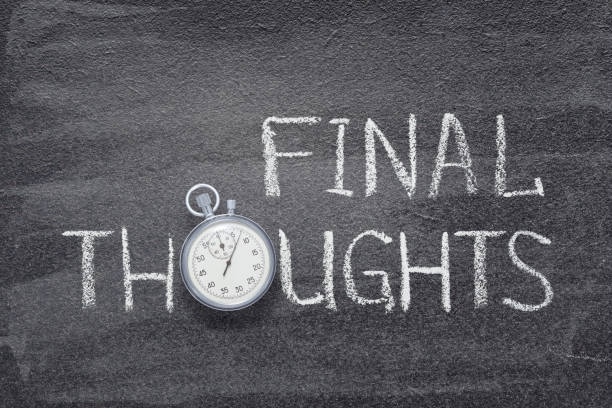
It’s hard to say the Cannes Lions International Festival of Creativity flat-out doesn’t matter, that advertising does not matter, that marketing does not matter. Because we know that it does. Especially as it keeps getting bigger, and tech companies and consultancies keep raising their stakes — which keeps clients flooding to the Riviera.
So rather than argue Cannes Lions is irrelevant, the better question is what role does it play credibly in an industry that is defined by much more than simply creative excellence? At its worst, this event is a boondoggle. But somewhere in the middle it is a great place to connect and network and probably at the very top end it’s a place to learn and get inspired. Why? Because it still keeps in focus the people factor – what vendors, attendees and sponsors expect and want.
Plus the launch of trends, such as ones that would grip other industries:
‣ It is a company called Anomaly. Its partners set out to create … well, an anomaly. A shop that could recommend and implement media/advertising solutions using a variety of means, including traditional advertising, digital, social and new-product development, and the burgeoning use of artificial intelligence. At the same time, Anomaly wanted to develop its own intellectual property. But its clients are never billed based on time, only on performance, and Anomaly developed a battery of metrics to measure that. In 2016 they were placed #4 on Ad Age’s “A List” of agencies. That year they won every single one of their “new business” pitches to new clients.
‣ And one of the favorites: the annual Deloitte Digital/Amazon panel on “Creativity”. In 2017 they showed how 50% of the fastest-growing companies in the world were employing more smart machines than people, that AI tools have moved beyond “nice-to-have” to “gotta have”. Every year’s session shows the improved accessibility of AI and how AI is longer just a real competitive advantage, but rather a business necessity across every industry. These sessions go into detail on which AI tools must be embraced and how to embrace them – riveting sessions on embracing digital transformation in advertising, communication and all manner of media production. Plus how to build the creative teams you need. This year there are 27 separate sessions across the week on generative AI.
There is no recipe to creativity. No beginning, middle or end. No grammar, no language. Yet its effects are anything between dust and magic. Beyond the product and brand, creativity is the wheel of the endeavor called “advertising”.
But overall, a human’s capability of capturing the interesting things in an instant is incredibly challenging for creative experts in advertising including the writers who stimulate all ideas and visuals into words. A writer must be observant in order to grab the attention and provide even inspire the audience to change their mind and create a change of experience that audiences will get when buying or using the product.
Simply put, creativity is a phenomenon whereby something new and valuable is formed.
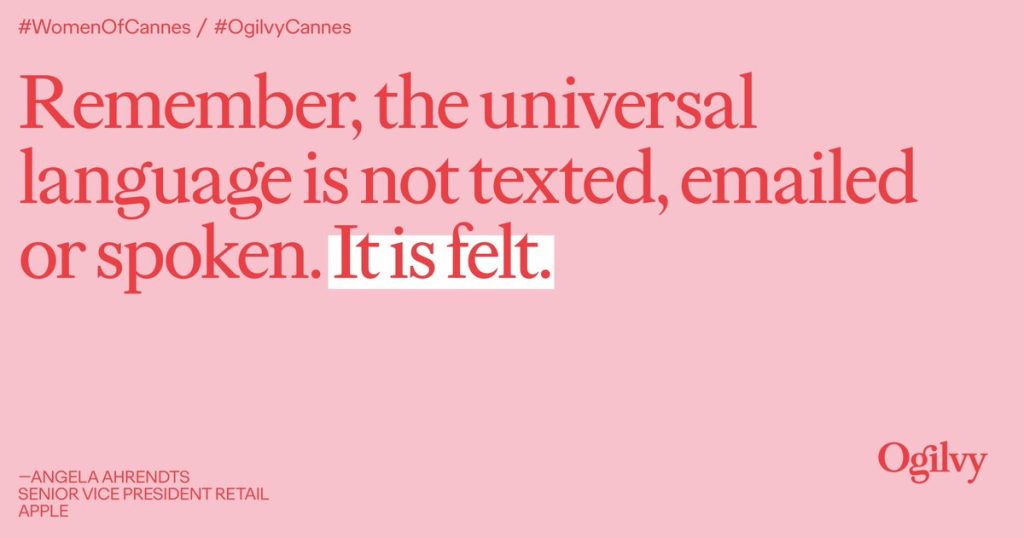
One Reply to “From Cannes Lions 2023: my tribute to the “Conference of the World’s Attention Merchants””